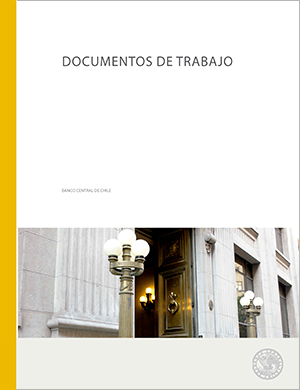Working papers N° 294: Trade Openness And Real Exchange Rate Volatility: Panel Data Evidence
Publications
Working papers N° 294: Trade Openness And Real Exchange Rate Volatility: Panel Data Evidence
Autor: César Calderón
Description
A recent strand of the literature, the so-called “New Open Economy Macroeconomics”, argues that nonmonetary factors have gained importance in explaining exchange rate volatility. In this context, it has been suggested the inclusion of shocks to productivity, terms of trade, and government spending, among others. The goal of the present paper is to explain the real exchange rate volatility by positing a structural relationship between volatility and its determinants. To perform our task we collected information on exchange rates, output, terms of trade, government spending, monetary aggregates, exchange rate regimes, trade and financial openness for a sample of industrial and developing countries for the 1974-2003 period. We will use GMM-IV methods for panel data to test the following hypotheses: (a) real exchange rate (RER) fluctuations are less volatile in more open countries, and (b) trade openness helps attenuate the impact of highly volatile shocks to fundamentals on the volatility of RER fluctuations.
Working papers N° 294: Trade Openness And Real Exchange Rate Volatility: Panel Data Evidence
Boxes and graphics

